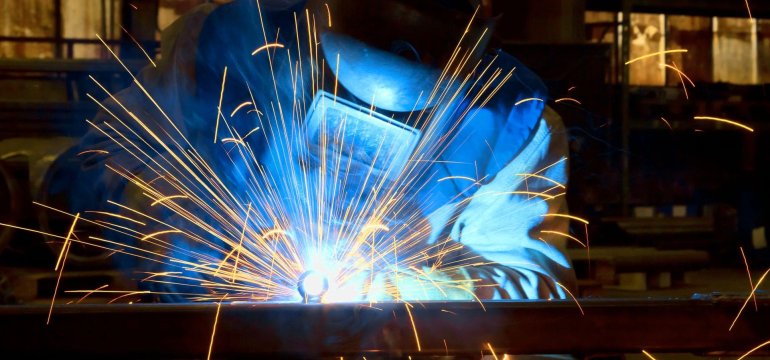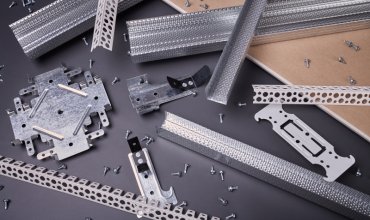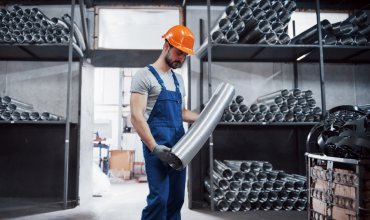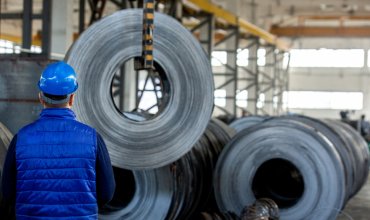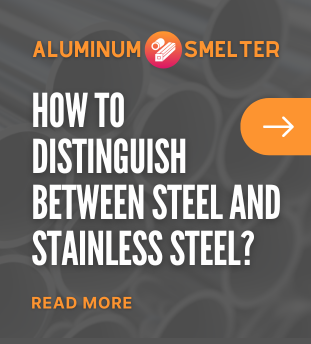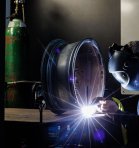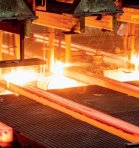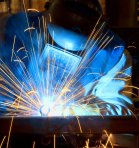Aluminum is one of the most widely used metals in everyday life. It is found almost everywhere - in our homes, vehicles, electronic devices and increasingly in the construction industry. Thanks to its unique properties, such as lightness, strength and corrosion resistance, aluminum has gained enormous popularity. However, in order for this metal to serve humans with its full potential, it is necessary to process it properly, i.e. to remelt aluminum.
The process of remelting aluminum is not a simple task and requires specialized knowledge and appropriate equipment. In Poland, both small workshops and large industrial plants organize the remelting process for obtaining new, ecologically friendly products. Want to know how to do it? Read our detailed guide!
History and importance of aluminim in industry
Aluminim is a metal that has gained great importance in industry since its commercial discovery in the 19th century. Friedrich Wöhler, a German chemist, first isolated aluminum in 1827, but it wasn't until Charles Martin Hall and Paul Héroult in 1886 that a method of producing it, known as the Hall-Héroult process, was developed. This moment revolutionized the possibility of mass production of aluminum, which influenced its widespread use in various fields.
In Poland, aluminum remelting has become important in the context of the circular economy and care for the environment. Recycling aluminum is an energy-efficient process - it requires only 5% of the energy needed to produce the original metal. As a result, aluminum has become synonymous with modernity and sustainability.
Properties of aluminum and its advantages in the remelting process
Aluminum has a number of unique properties that make it an ideal material for recycling. First of all, it is an extremely lightweight material - its density is only 2.7 g/cm³, which is three times less than for steel. In addition, aluminum is very malleable, which means it can be easily formed into various shapes, which is extremely beneficial in the remelting process.
An additional advantage is aluminum's high resistance to corrosion due to the presence of a natural aluminum oxide layer, which protects the metal from further chemical reactions. Moreover, aluminum has excellent thermal and electrical conductivity, which makes it used both in electronics and in cooling systems.
Undoubtedly, one of the most important aspects is that aluminum remelting can be repeated almost indefinitely without loss of quality, making it an excellent material for recycling.
Aluminum remelting process step by step
Preparation of the raw material for remelting
In order for the aluminum remelting process to be effective, it is necessary to properly prepare the raw material. Usually, aluminum raw material comes from waste and scrap. The first step is to thoroughly sort and clean the aluminum of any impurities such as paint, varnish or other metals.
This step is crucial, as any impurities can affect the quality of the final product. In Poland, more and more attention is being paid to waste segregation, which significantly facilitates the recycling process.
Melting of aluminum
The next step is the actual melting. Various types of furnaces are used to melt aluminum. The most popular are rotary, crucible and induction furnaces. The melting point of aluminum is about 660°C, which means that the technology must be precise and efficient.
In Poland, industrial plants, but also some small handicraft workshops, have the right furnaces to melt aluminum efficiently.
Casting and forming
After melting, the liquid aluminum is poured into molds, where it solidifies into the desired shape. This process, called casting, is crucial for obtaining precise and durable products. The molds can come in a variety of shapes and sizes, giving a wide range of uses for the melted aluminum.
In Poland, casting technology is at a high level, and many industrial plants use modern methods that ensure the highest quality of final products.
Safety in aluminum remelting
Aluminum remelting is a technological process that, although it brings many benefits, also carries certain risks. That is why it is so important to maintain appropriate safety measures at every stage of this process.
Personal protective measures
Employees working in aluminum smelting must be properly equipped with personal protective equipment. This includes protective clothing, gloves, goggles and protective masks to protect against high temperatures and burns.
In addition, due to the potential for harmful gases to be released during aluminum melting, it is essential to use appropriate ventilation systems and protective masks to ensure air filtration.
Infrastructure safety
Not only people, but also infrastructure must be properly protected. Aluminum mel ting furnaces must be regularly inspected and maintained. Leaks or failures can lead to serious consequences, including fires or explosions.
Emergency procedures
Every plant should have detailed emergency procedures, including evacuation, first aid and rescue operations. In Poland, training and drills are increasingly being organized to prepare employees for emergency situations.
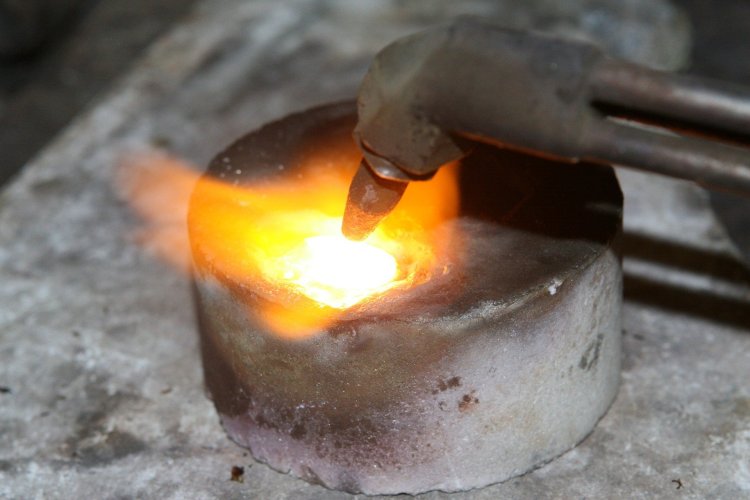
Environmental aspects of aluminum smelting
Undeniably, one of the main advantages of aluminum rem elting is its beneficial effect on the environment. Aluminum is a material that can be remelted repeatedly without losing quality. Therefore, aluminum recycling is a key element in terms of environmental protection and sustainability.
Energy savings
The aluminum recycling process requires about 95% less energy than producing new metal from bauxite ore. This huge energy savings translates into reduced greenhouse gas emissions and a reduced carbon footprint.
Reducing waste
The modern world is struggling with the problem of excess waste. The aluminum remelting process makes it possible to significantly reduce the amount of metal waste going to landfills. By properly segregating and recycling aluminum, we can reduce the amount of virgin raw materials needed to manufacture new products.
Supporting the circular economy
Aluminum recycling fits into the concept of the circular economy, which involves closing the life cycle of products by reusing, recycling and reprocessing them. This allows for a more efficient use of resources and reduces the negative impact on the environment.
Aluminum remelting in Poland: Examples and challenges
In Poland, the aluminum recycling industry is developing rapidly. More and more companies are investing in modern technologies that enable efficient aluminum remelting. However, despite its many successes, the industry also faces some challenges.
Examples of companies operating in Poland
There are many companies in Poland that specialize in recycling and remelting aluminum. One example is Grupa Kęty S.A., which is a leader in the production of aluminum sections. This company invests in modern recycling technologies and creates products using recycled aluminum.
Another example is Hydro, a global leader in aluminum production, which has plants in Poland. This company is committed to sustainable development and technological innovation, enabling efficient recycling and remelting of aluminum.
Challenges of the aluminum remelting industry in Poland
Despite its rapid growth, the aluminum recycling industry in Poland also faces some challenges. First and foremost, a significant problem is the lack of sufficient infrastructure for efficient collection and processing of aluminum. Poland still lacks a systematic approach to segregating metal waste, which hinders access to the raw material.
Another challenge is the education of the public. Many people are still unaware of the benefits of aluminum recycling and do not know the principles of proper waste segregation. Education and information campaigns are key to increasing environmental awareness and improving recycling rates.
The importance of education in aluminum recycling
Education plays a key role in the aluminum recycling process. With proper education, both children and adults can learn how to properly separate waste and how to care for the environment through recycling.
Educational programs in schools
Introducing educational programs in schools can significantly contribute to raising environmental awareness among young people. Recycling lessons, workshops and educational projects can teach young people about the benefits of aluminum remelting and why it's important to take care of the environment.
Social campaigns
Social campaigns, organized by the government and NGOs, can help reach a wide audience. TV spots, posters, and street campaigns are effective tools that can change public attitudes toward aluminum recycling.
Cooperation with companies
Companies can also play an important role in educating the public. By organizing open days, workshops and showing what the aluminum remelting process looks like from behind the scenes, they can encourage their employees and local communities to be more environmentally friendly.
Technological innovations in aluminum remelting
Technology is constantly evolving, and the aluminum industry is also benefiting from modern solutions that make the process of melting and recycling this metal easier.
Modern melting furnaces
One of the most important innovations is modern aluminum remelting furnaces. Induction technology, plasma furnaces and low-temperature furnaces significantly increase energy efficiency and reduce emissions of harmful gases. In Poland, many companies are investing in such modern solutions to make the remelting process more sustainable.
Advanced sorting systems
Another innovation is advanced aluminum sorting systems. Using optical and magnetic technologies, it is possible to precisely separate aluminum from other materials, which significantly increases the quality of the raw material for remelting. Another example is robot-based systems that enable automation of the sorting process.
Clean remelting technologies
A final but equally important innovation is clean remelting technologies. By using modern filtration and heat recovery methods, the aluminum remelting process becomes more environmentally friendly. These technologies reduce emissions and increase energy efficiency.
Summary
Aluminum remelting is a key process that allows this valuable metal to be used effectively in various areas of life. Thanks to the properties of aluminum and advanced technologies, it is possible to process this metal multiple times without losing its quality. This process not only supports sustainable development, but also contributes to energy savings and environmental protection.
In Poland, the aluminum recycling industry is developing rapidly, although it also faces some challenges, such as the lack of adequate infrastructure and low public awareness of the benefits of recycling. Education plays an important role, both in schools and through widespread social campaigns.
Modern technological innovations - such as advanced furnaces, sorting systems and clean remelting technologies - are helping to make the aluminum remelting process more efficient and environmentally friendly.
With the joint efforts of companies, government and society, it is possible to build a more sustainable future in which aluminum plays a key role as a recycled material. I encourage everyone to take care of the environment, separate waste and support aluminum recycling initiatives. In this way, we can contribute to protecting our planetary home for future generations.


